Backroads of Iberia: Spanish Paradores & Portuguese Pousadas
September 30 - October 16, 2018
Part Two: Spain, Page Four - Toledo and Madrid
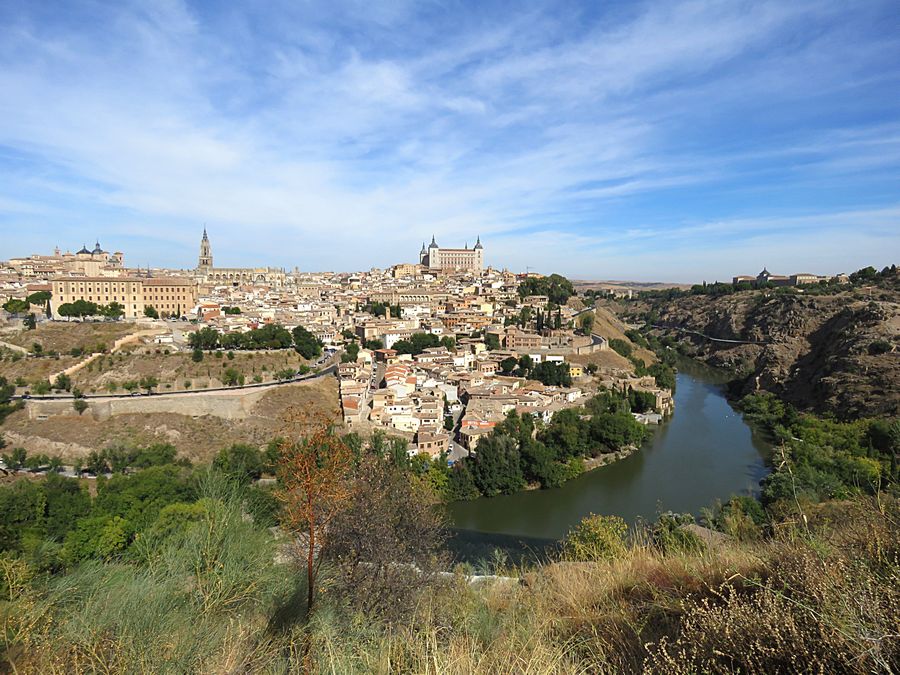
An overlook where we could view Toledo, Spain and the Tagus
River. Toledo is known as the "Imperial City" for having been
the main venue of the court of Charles V, Holy Roman Emperor,
and as the "City of the Three Cultures" for the cultural influences
of Christians, Muslims and Jews reflected in its history. It was also
the capital from 542 to 725 AD of the ancient Visigothic
kingdom, which followed the fall of the Roman Empire.
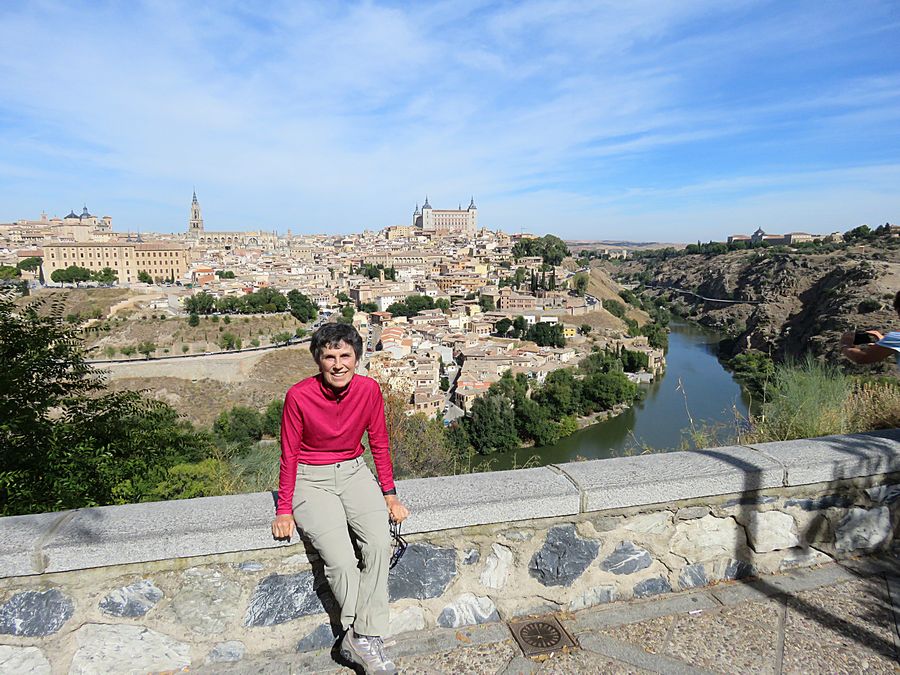
Pat at the overlook
The prominent building in the center of the photo
is the Alcazar.
This ancient Moorish fortress,
built on the site of an earlier Roman fort,
was later renovated by the Christian Kings,
Alfonso VI"the Brave" in the 11th century
and Alfonso X "the Wise" in the 13th century.
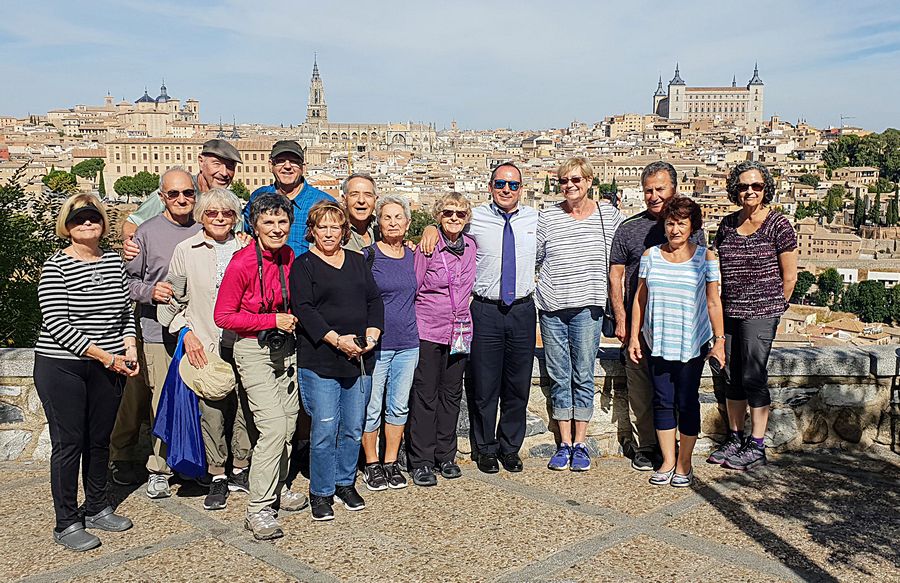
Group shot taken by our tour leader, Rikardo
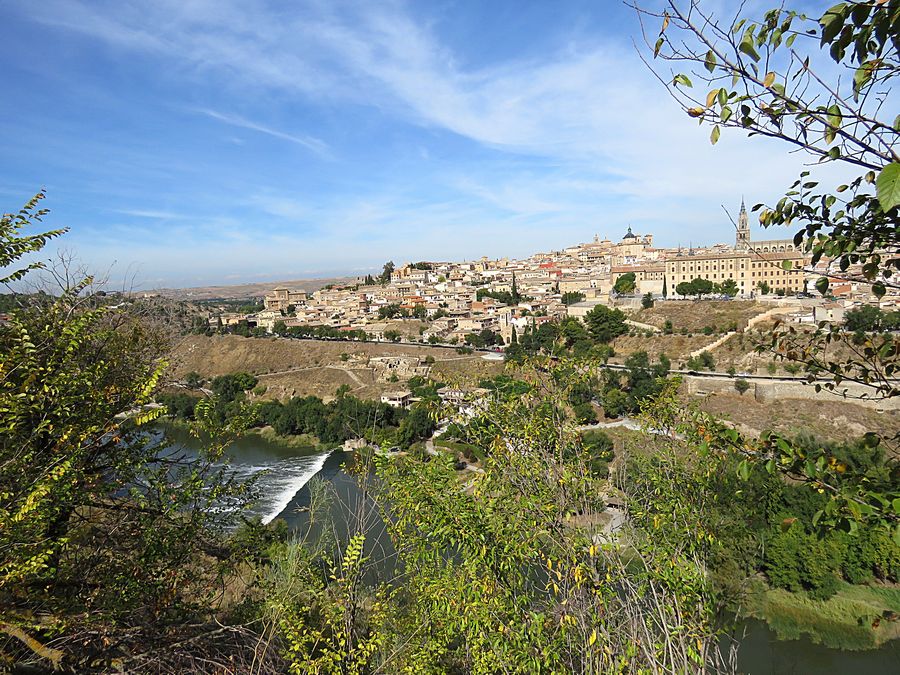
Another view of Toledo from the same spot.

Street scene in Toledo
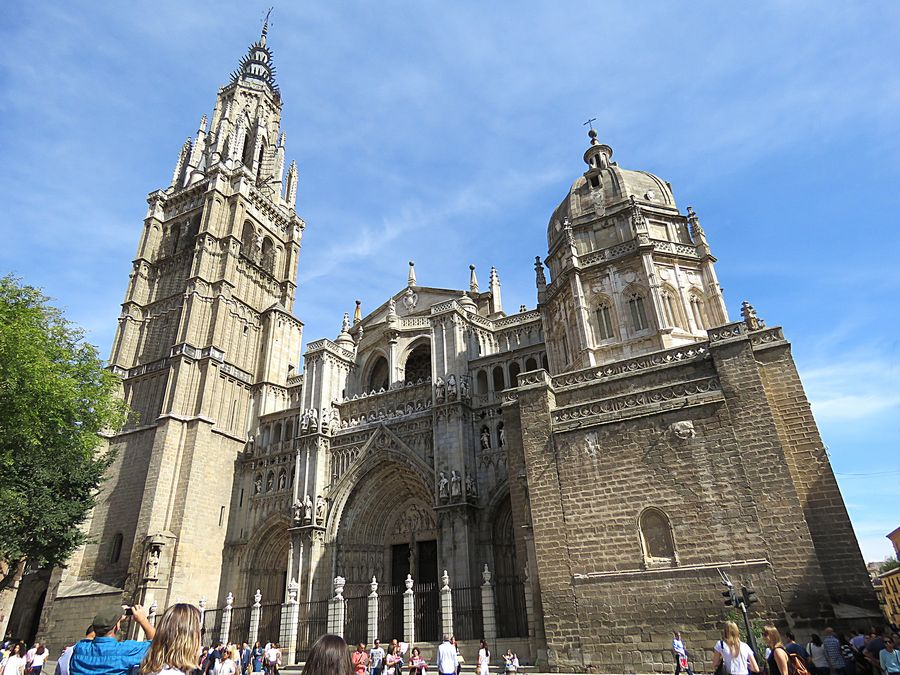
The Primate Cathedral of Saint Mary of Toledo,
a Roman Catholic
Church. It is the seat of
the Metropolitan Archdiocese
of Toledo.
The Cathedral of Toledo is one of the three 13th
century
High Gothic cathedrals in Spain
and may be the greatest
example of the
Gothic style in Spain. It was begun in 1226
under
the rule of Ferdinand III.

In the Jewish Quarter of Toledo. During the Middle Ages,
a time
when Toledo, Spain was under Muslim control prior
to the
Christian conquest, the city was home to large
communities of
Jewish, Muslim and Christian inhabitants,
all living and working
together in relative peace and harmony.
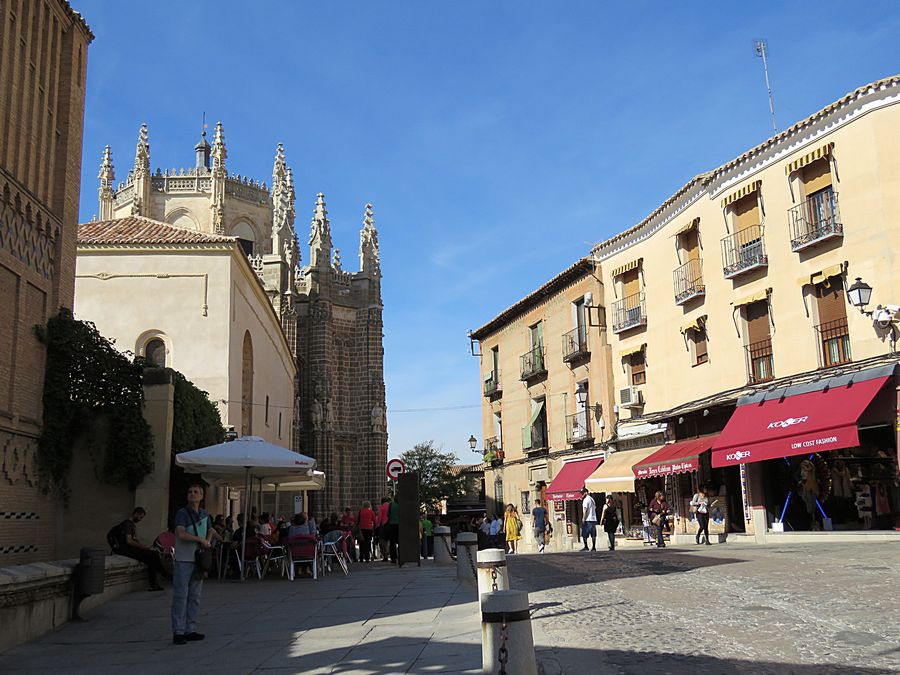
Street scene. Our tour leader, Rikardo,
standing in shade on the left side.

2 children that were waiting outside a church, along with
others,
for the rest of the wedding party to arrive.
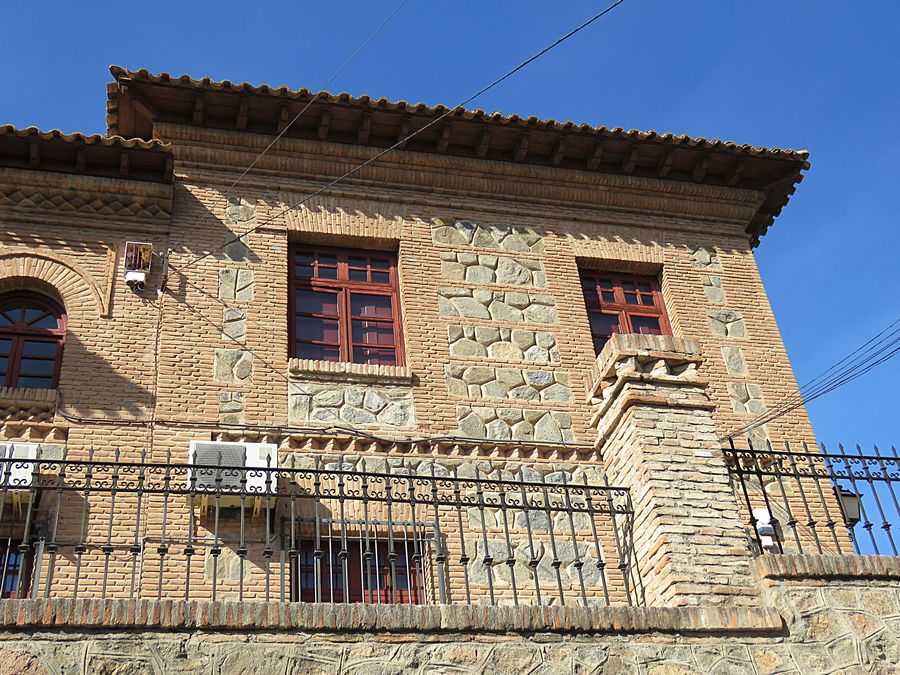
A building in Toledo that shows traditional
Spanish brick architecture
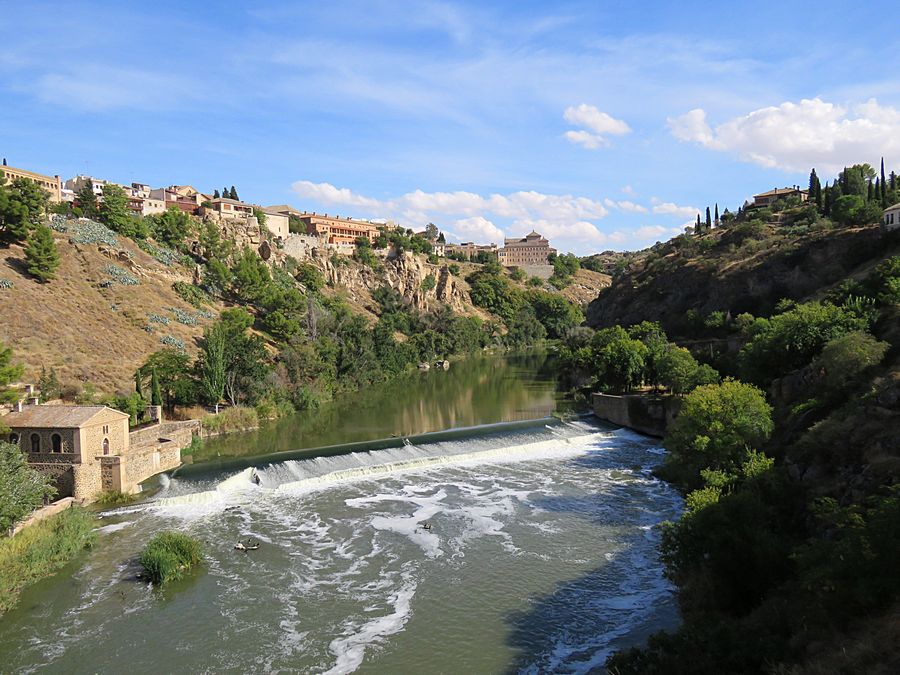
The Tagus River from the Puente de Alcantara -
Alcantar Bridge - in Toledo
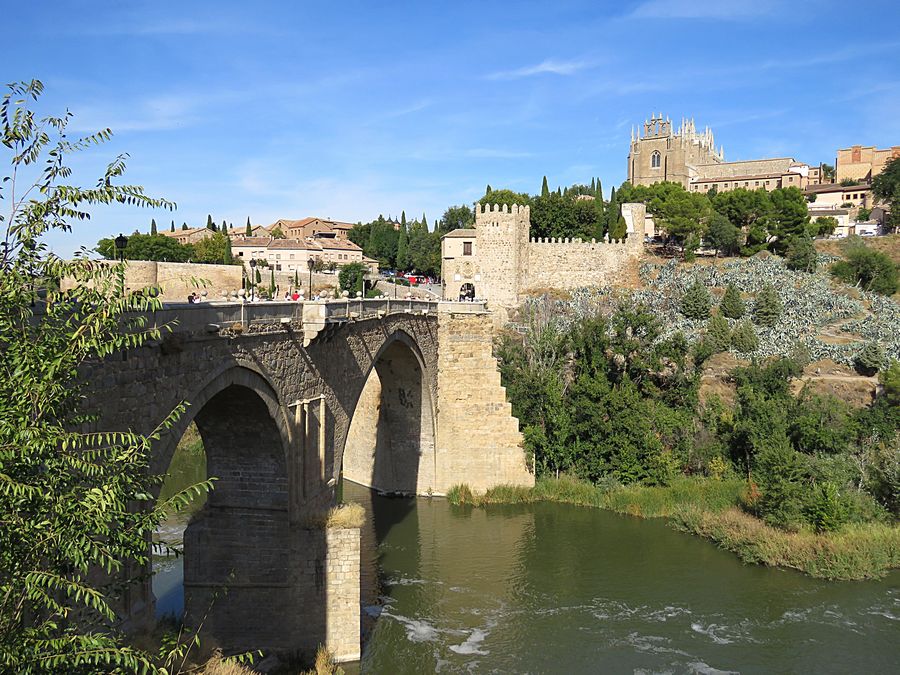
The Puente de Alcántara, a Roman arch bridge
in Toledo, spanning the
Tagus River.
It was built by the Romans after they founded the
city. It has
been damaged and rebuilt twice.
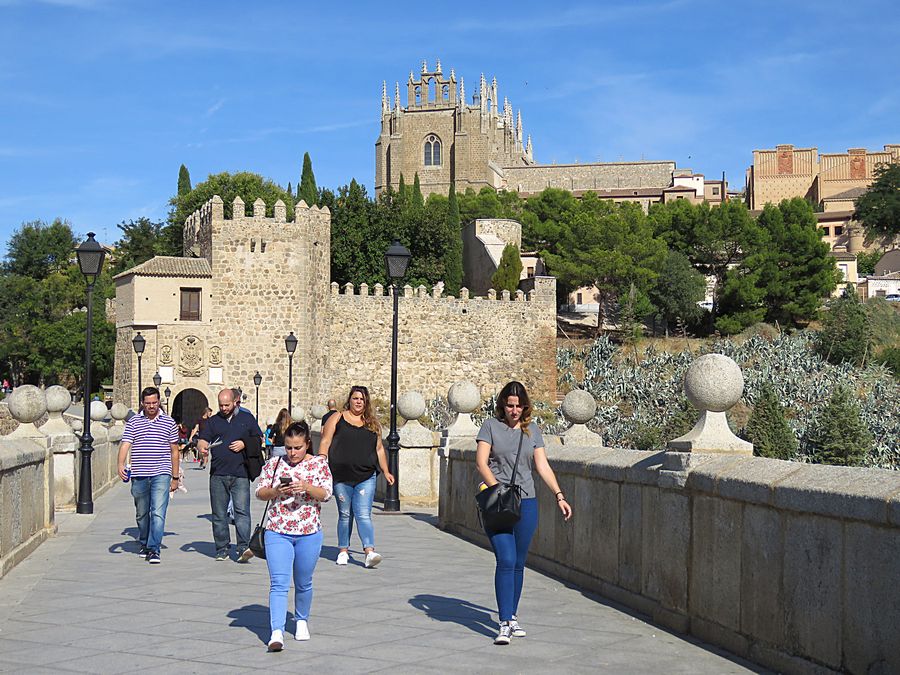
Tourists and others walking across Alcantar Bridge

The Cybele Palace, Palacio de Cibeles,
formerly the Palace of Communication
until 2011, located on the Cybele Plaza in Madrid.
It is currently the seat of the
Madrid City Council.
It opened in 1919 as the headquarters of Correos, the
Spanish postal and telecommunications service. The
Cybele
Fountain in front
was named after the
Roman goddess of nature and shows her in a chariot
pulled by 2 lions. Built in the late 1700s,
it has become a symbol of Madrid.
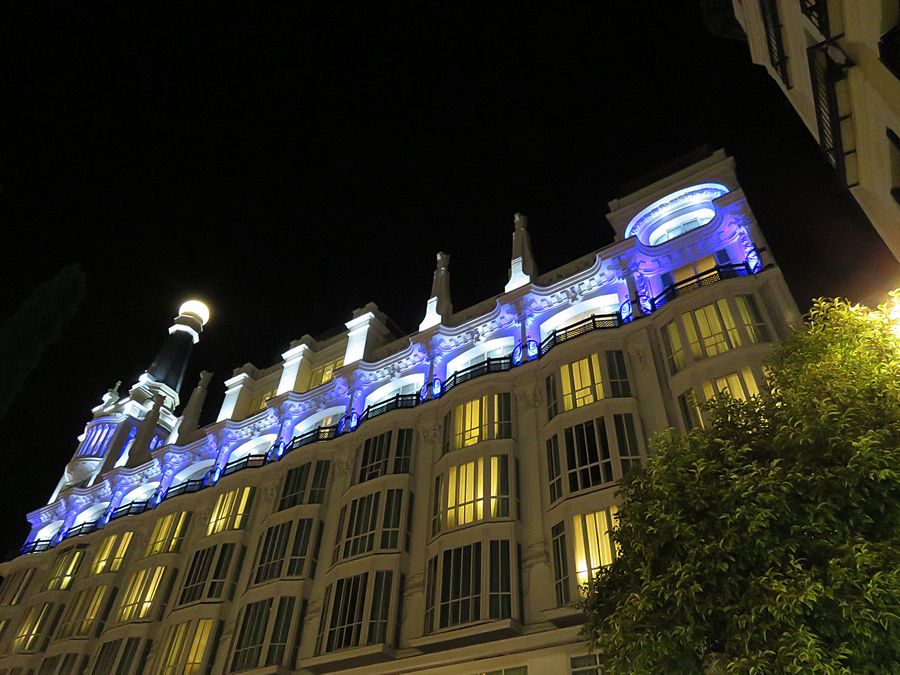
Hotel building in Madrid lit up at night
with changing colors.
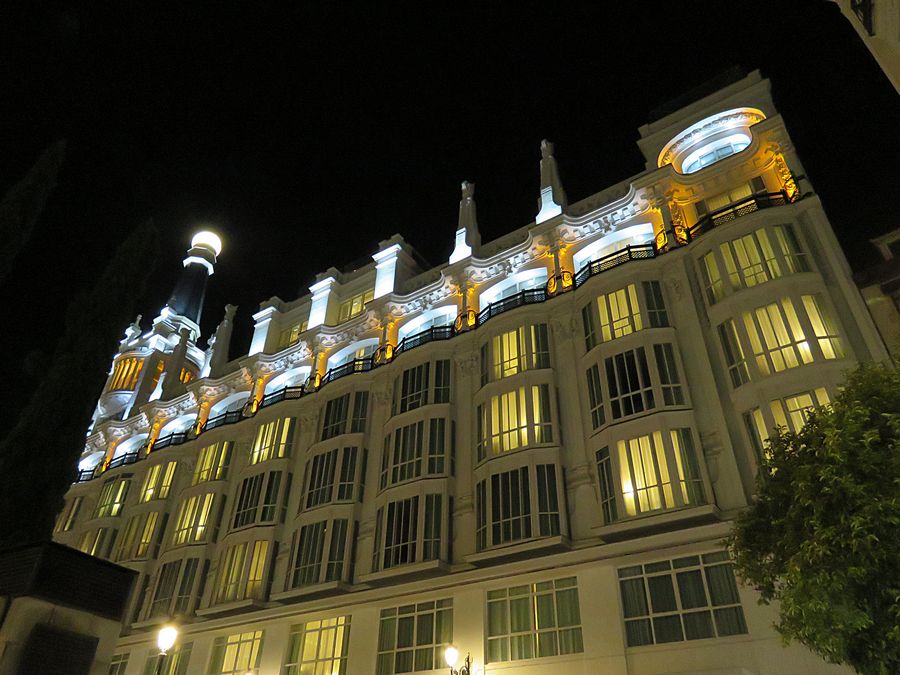
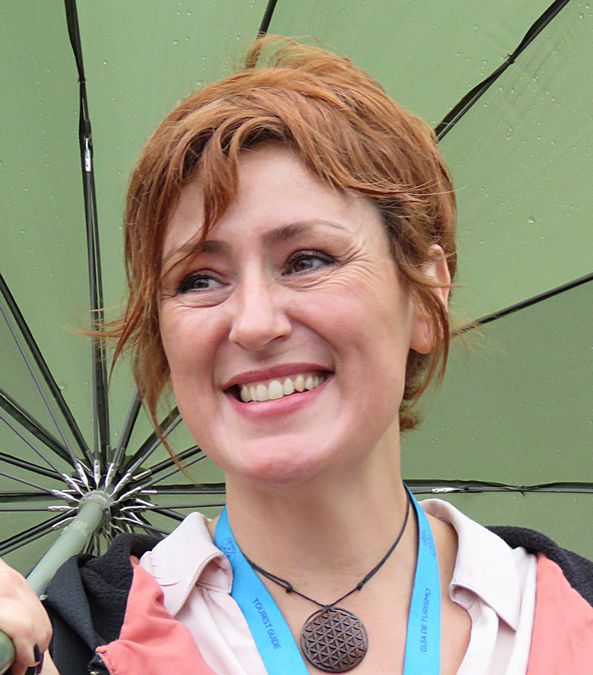
Our local guide in Madrid

Madrid's Royal Palace - constructed on the site of the
old Alcazar fortress,
which was a Moorish castle.
This is the city's largest building and Western
Europe's largest royal palace. It is situated
next to the Plaza de Oriente Square.
The castle was originally designed for the court
of
Felipe V. The first royal to
live here was
Carlos III. The palace has continued to be the royal
residence
since then and today. Although
the royals no longer live here, it is still the
official residence. The construction project was
begun in 1737 and completed
in 1764.
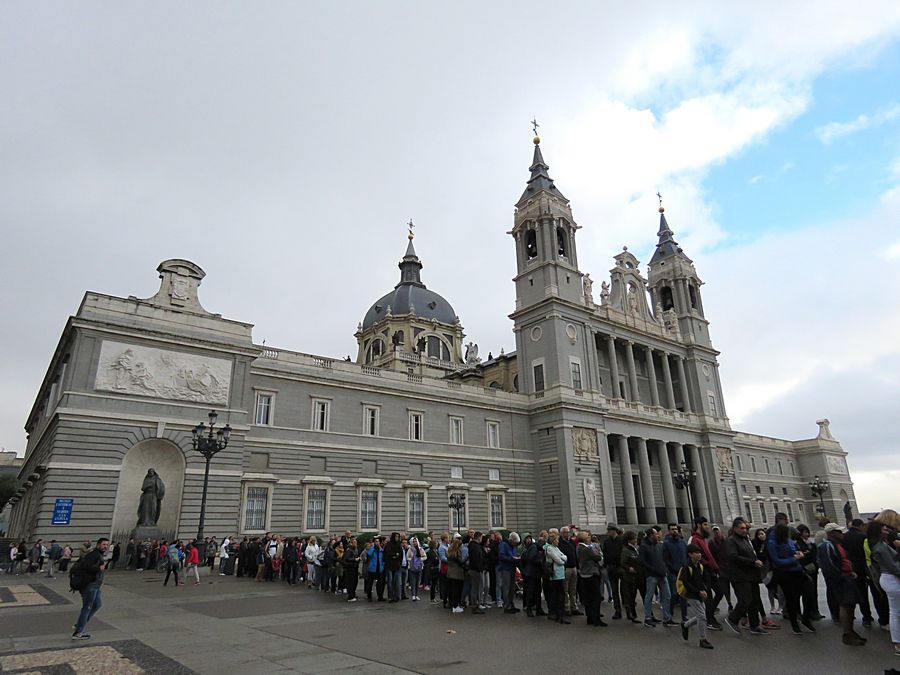
Almudena Cathedral next to the Royal Palace.
When the capital of Spain was transferred from
Toledo
to Madrid in 1561,
King Felipe II
wanted a cathedral for his new capital. Plans were
discussed
as early as the 16th century
to build a cathedral in Madrid dedicated to the
Virgin of Almudena, but construction did not begin
until 1879. The site on
which Almudena Cathedral
now stands was originally occupied by Madrid's
first mosque. Construction ceased completely during
the Spanish Civil War,
and the project was
abandoned until 1950. The Cathedral was not completed
until 1993, when it was consecrated by Pope
John Paul II. The Cathedral has
a museum explaining the history of the church.

Inside the Cathedral

San Miguel Market - originally built as an
outdoor market. Has
a wide variety of
stalls inside. It is a common gathering place in
Madrid.
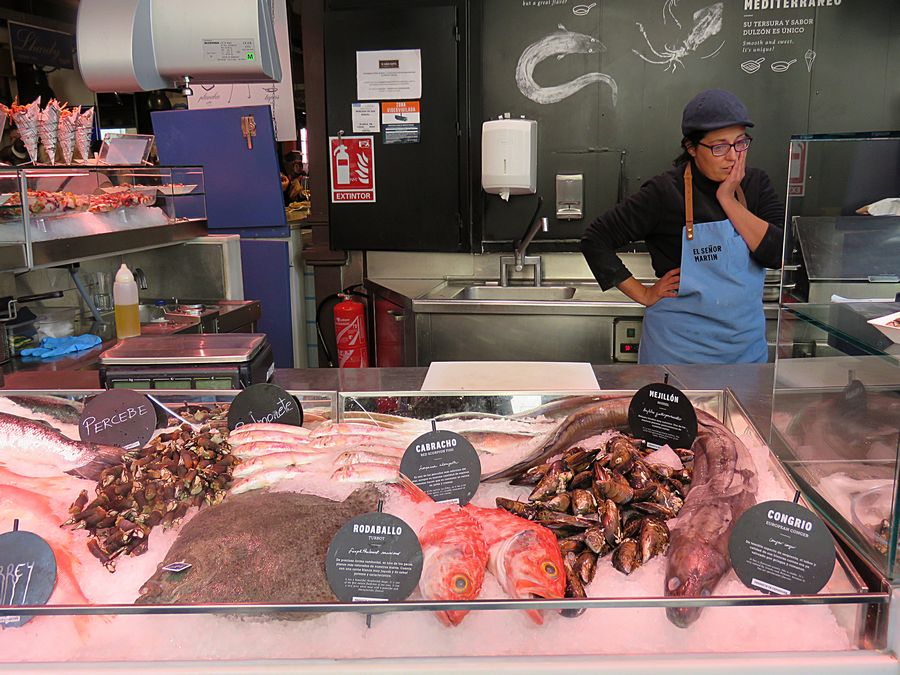
One of the stalls in San Miguel Market
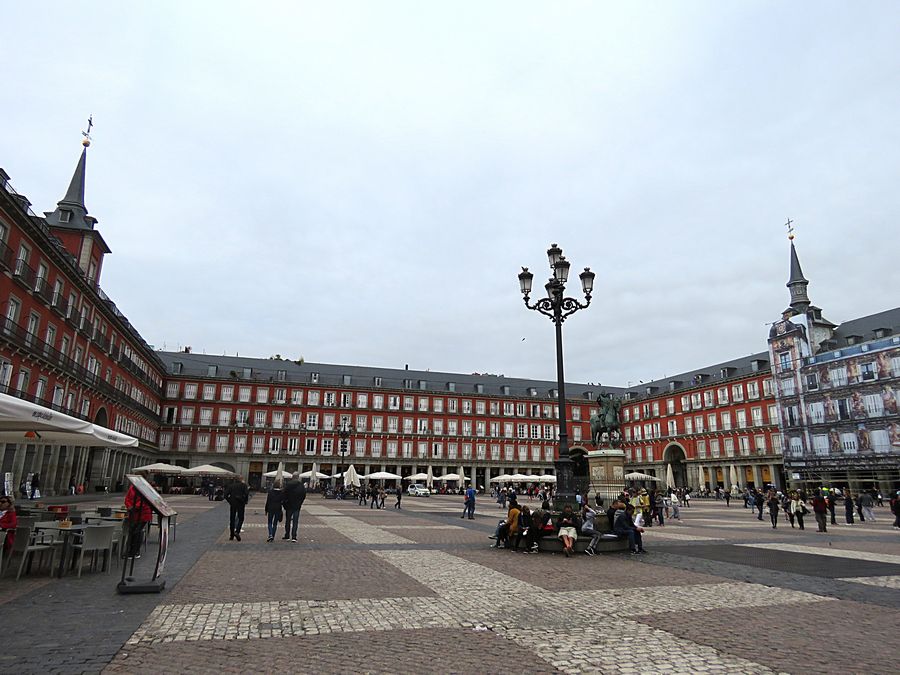
Plaza Mayor - the main square. The Plaza Mayor
dates back to the 15th
century where
it was originally called the "Plaza del Arrabal"
and was used
as the main market
of the town. Construction began in 1617
during Philip III's
reign. There is a bronze
statue of King Phillip III in the middle.

Plaza de Oriente Square with the Royal
Palace in the background.
The statue is a monument to King Philip IV.
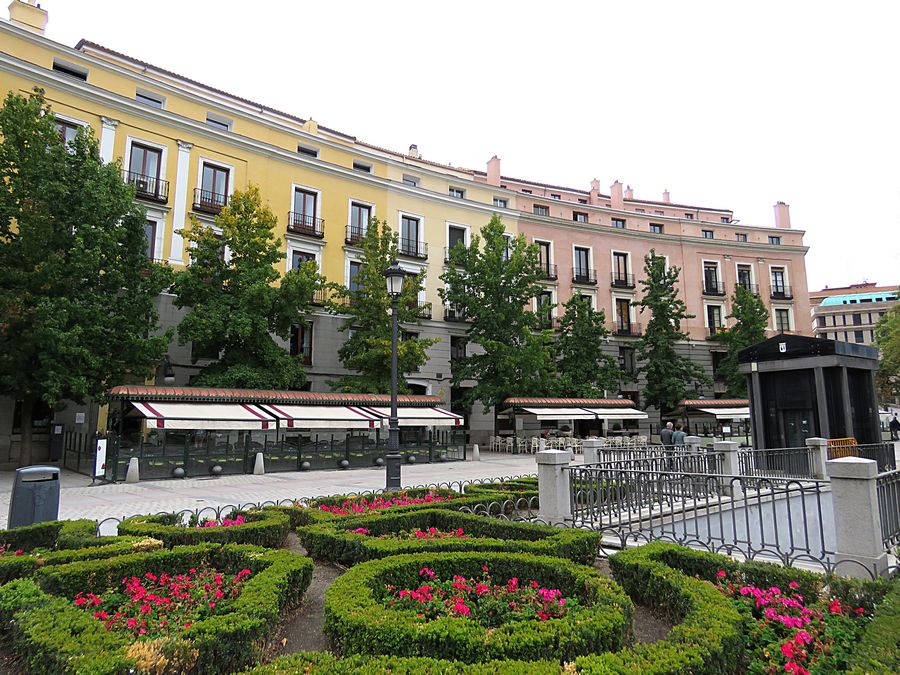
Area around Plaza de Oriente Square
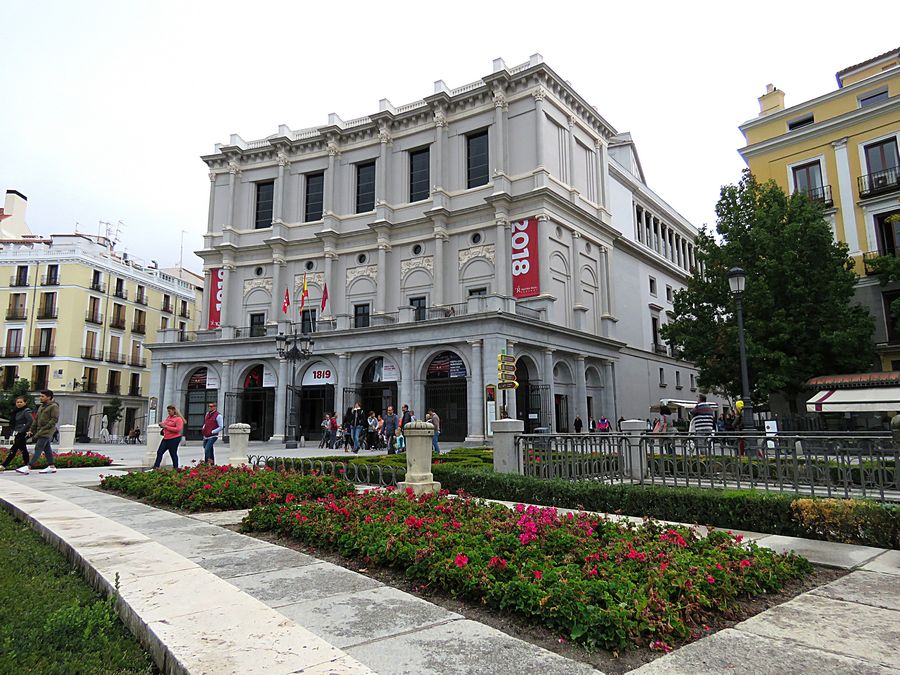
The Royal Theater at Plaza de Oriente Square,
a major opera house.
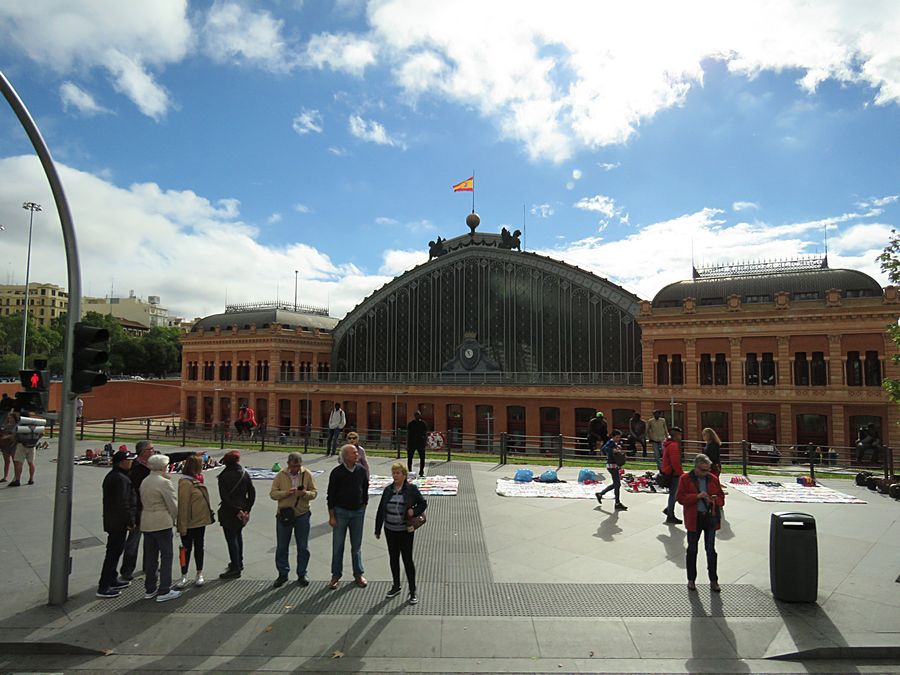
Madrid Atocha railway station, as seen from our bus.
The 2004 Madrid train bombings were nearly
simultaneous,
coordinated
bombings against
the commuter train system of Madrid on the
morning of
March 11, 2004, three days before
Spain's general elections. The explosions
killed 193 people and injured around 2,000. The
official investigation by the
Spanish judiciary
found that the attacks were directed by an al-Qaeda
terrorist cell, although no direct al-Qaeda participation
has been established.
Controversy regarding the handling
and representation of the bombings by
the government arose, with Spain's two main political
parties—Spanish
Socialist Workers' Party (PSOE)
and Partido Popular (PP)—accusing each
other of concealing or distorting evidence
for electoral reasons.
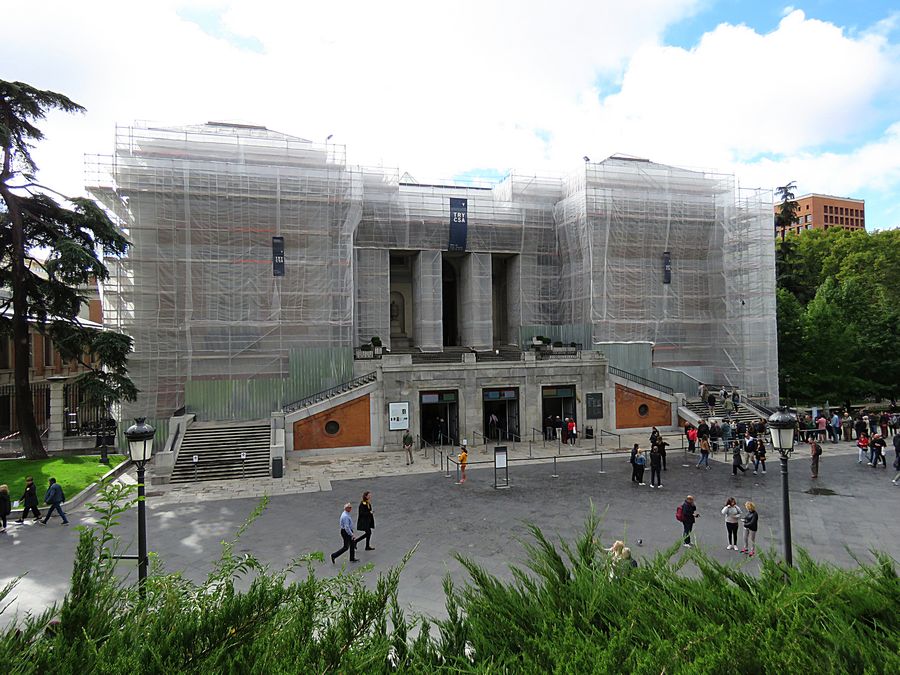
Prado Museum in Madrid - It was undergoing renovation
while
we toured the museum. It has a world famous
collection of
European, and especially Spanish,
art from the 12th to
19th century.
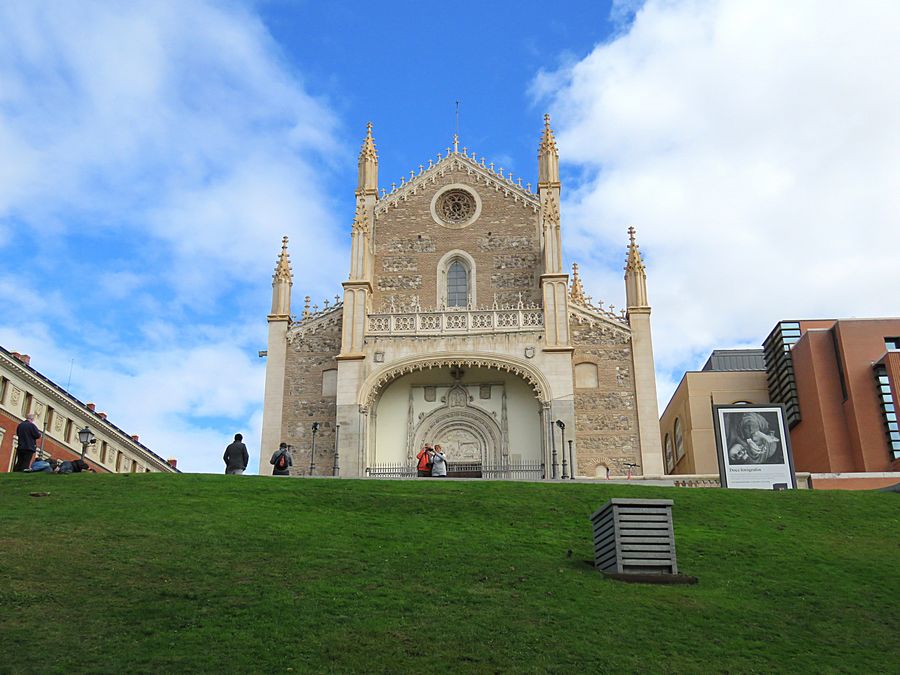
Church of St Jerome the Royal that
is next to the Prado,
from the early 16th century.
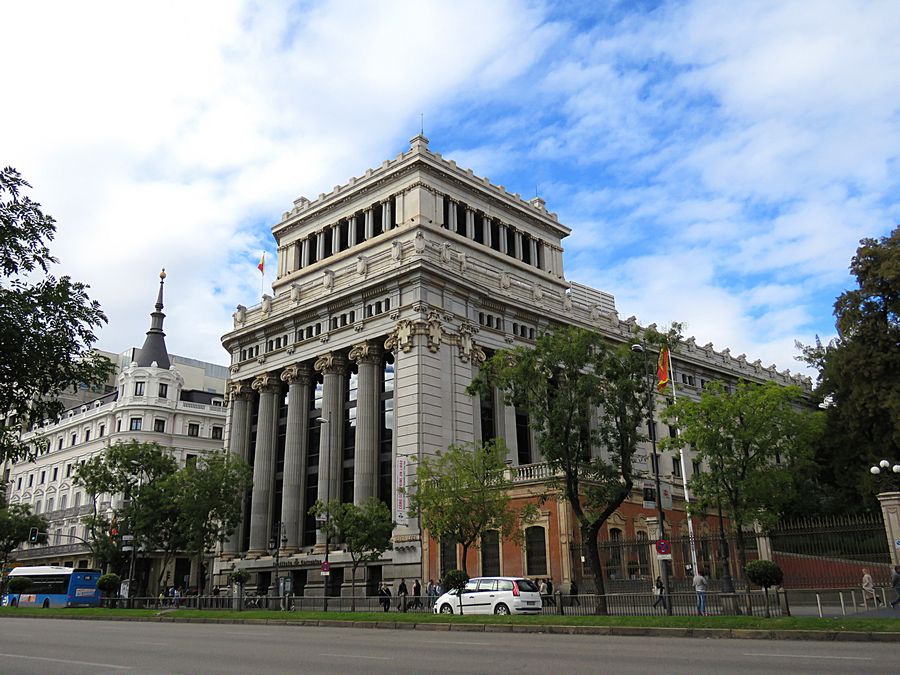
Along Calle Alcala, a main street in Madrid.
It is is one of the oldest and most
famous streets in Madrid with its mix of
architecture
and commercial and
residential buildings.
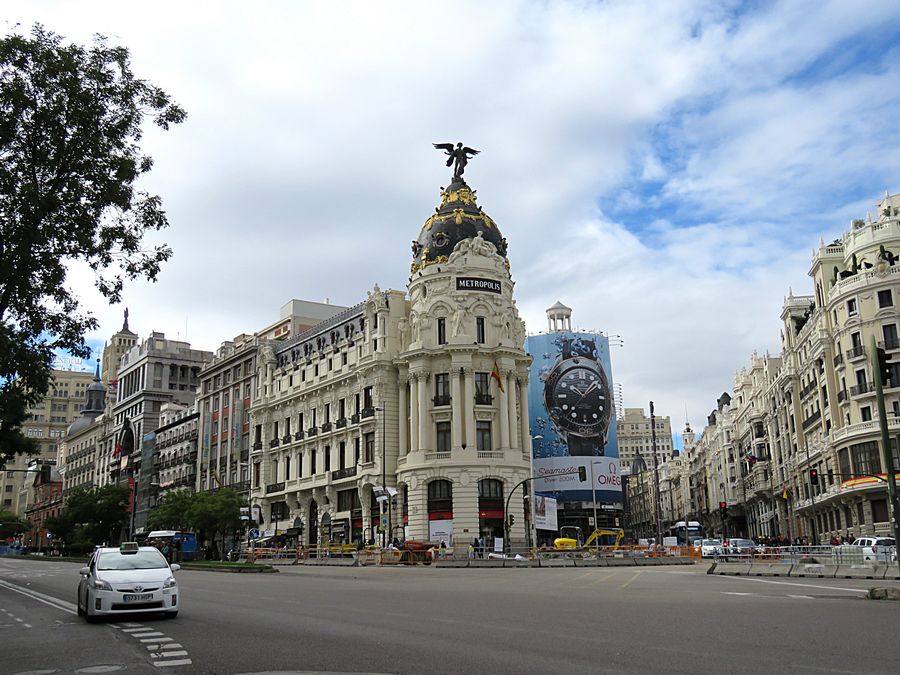
Metropolis Building (Edificio Metropolis) on the corner
of Calle Alcala and Gran
Via. Completed in 1911 to
house
an insurance company. Statue of winged
goddess Victory on the top.
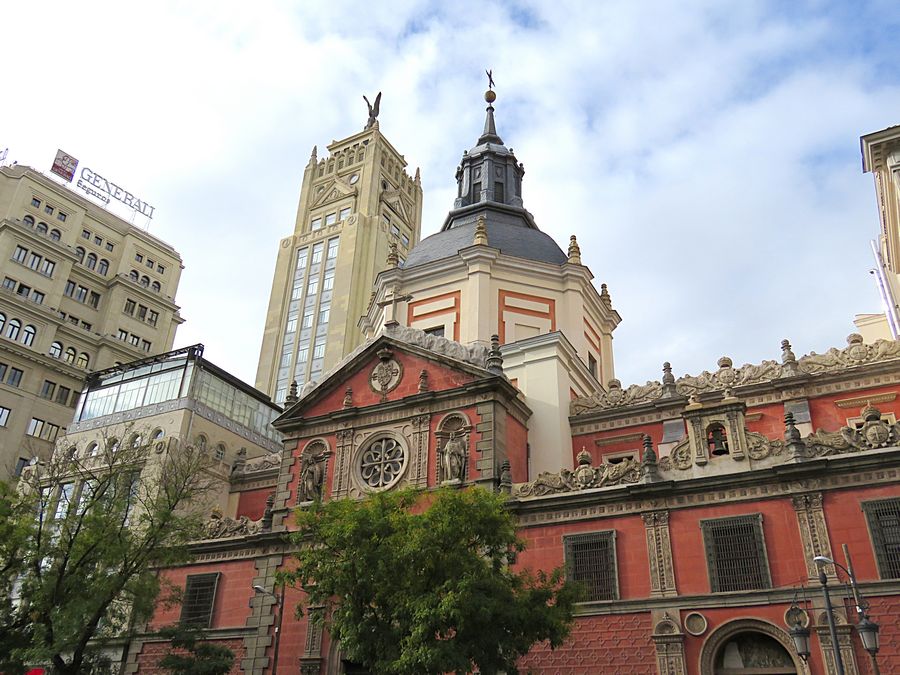
More buildings along Calle Alcala
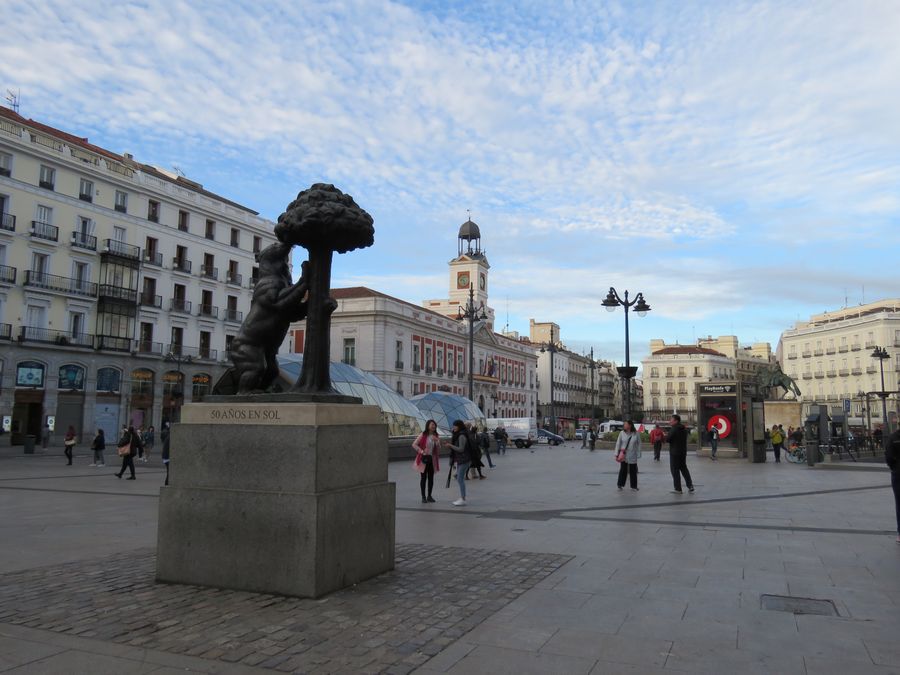
The Puerta del Sol (Spanish for "Gate of the Sun") -
a public square in Madrid,
one of the
best known and busiest places in the city.
The Puerta del Sol
originated as one of the gates
in the city wall that surrounded Madrid in the
15th century. The Statue of the Bear and the
Strawberry Tree (El Oso y el
Madrono) is a
sculpture from the second half of the 20th century.
It
represents the coat of arms of Madrid
and is found on the east side of the Puerto
del Sol, at the end of Calle Alcala
in the historical center of the capital.
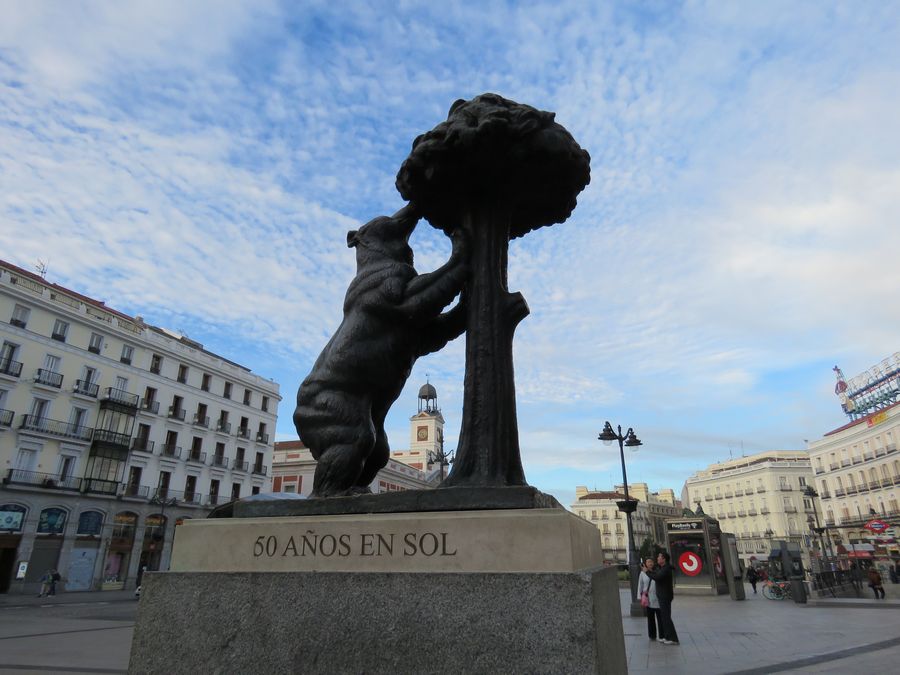

Our guide Rikardo lives in the Embajadores
neighborhood in
Madrid, which is highly diverse
and has about 1/3 foreign born.
We walked through the neighborhood.
People were very friendly.
These 2 women stopped to talk to us.
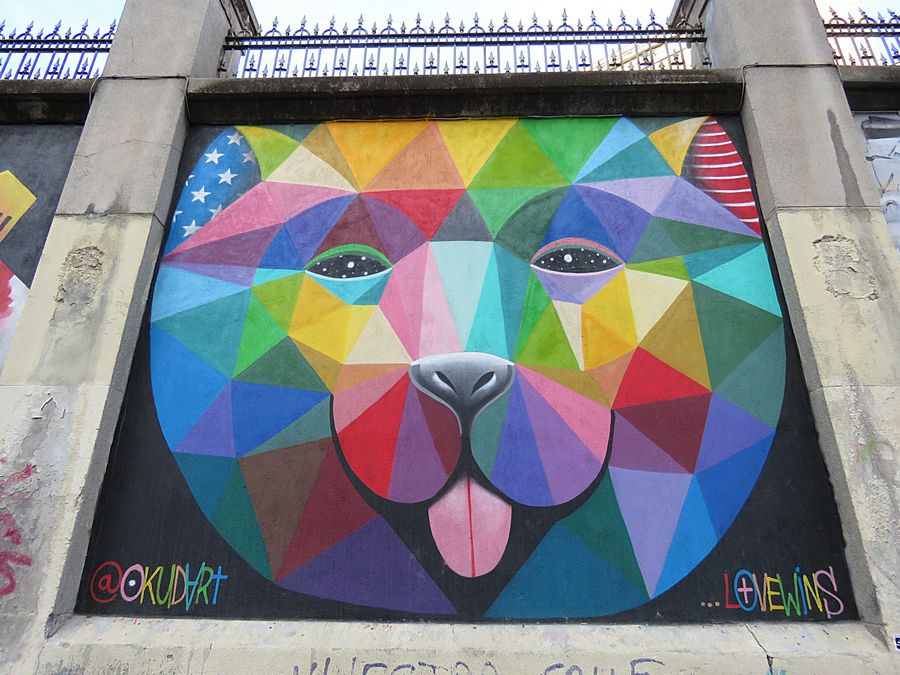
Art work in the Embajadores neighborhood.
There were
numerous other
drawings along this street.

Reina Sofia National Museum that contains
modern and
contemporary art, such as
works of Salvador Dali.
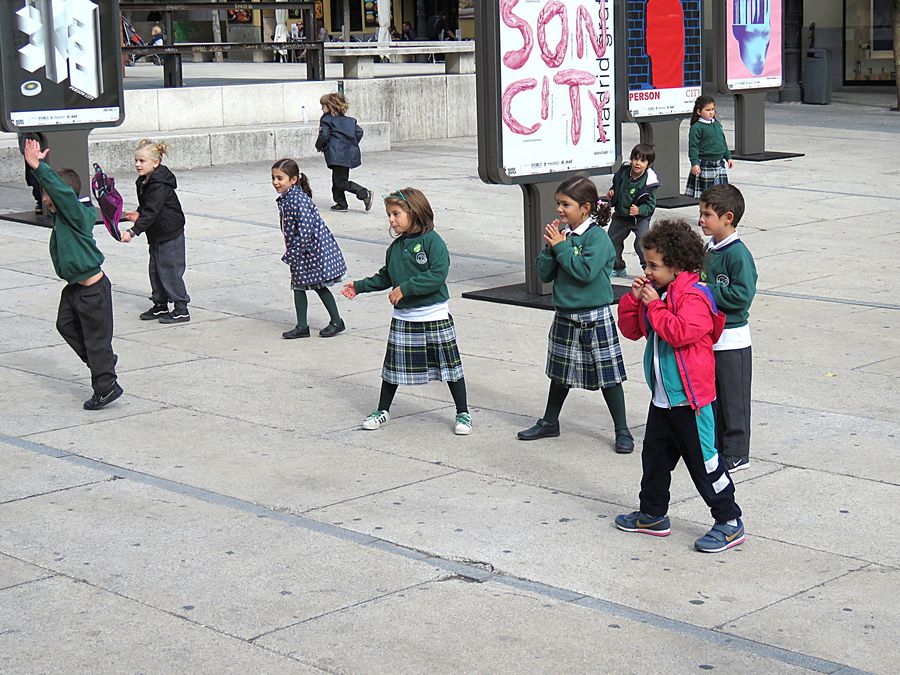
School kids playing outside the museum
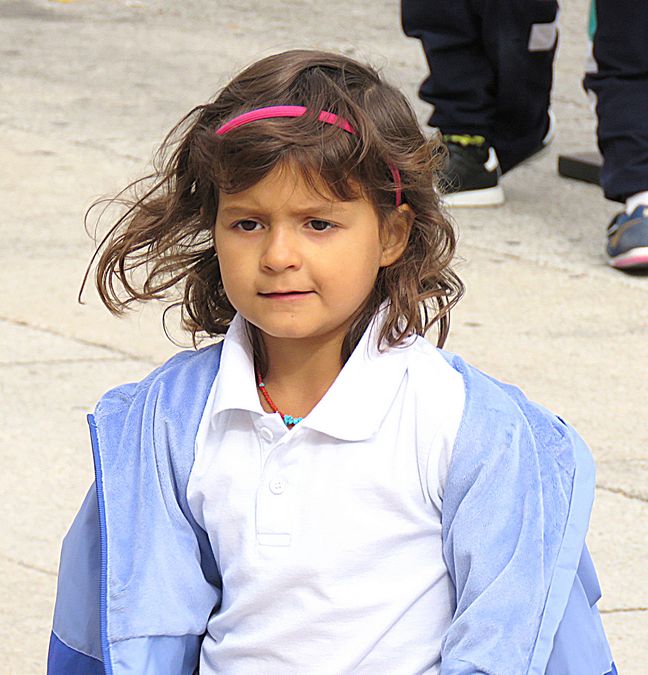
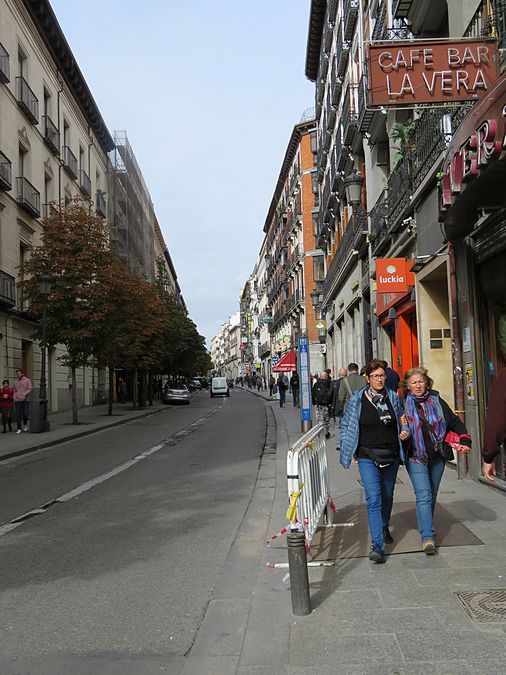
Street scene in Madrid

2 chariots pulled by horses on top of the
Ministry of
Environment and Territorial Planning
on Calle Alcala. Originally,
the building was
former headquarters of BBVA Bank. With these
sculptures, the bank was trying to project
an image of strength and power.
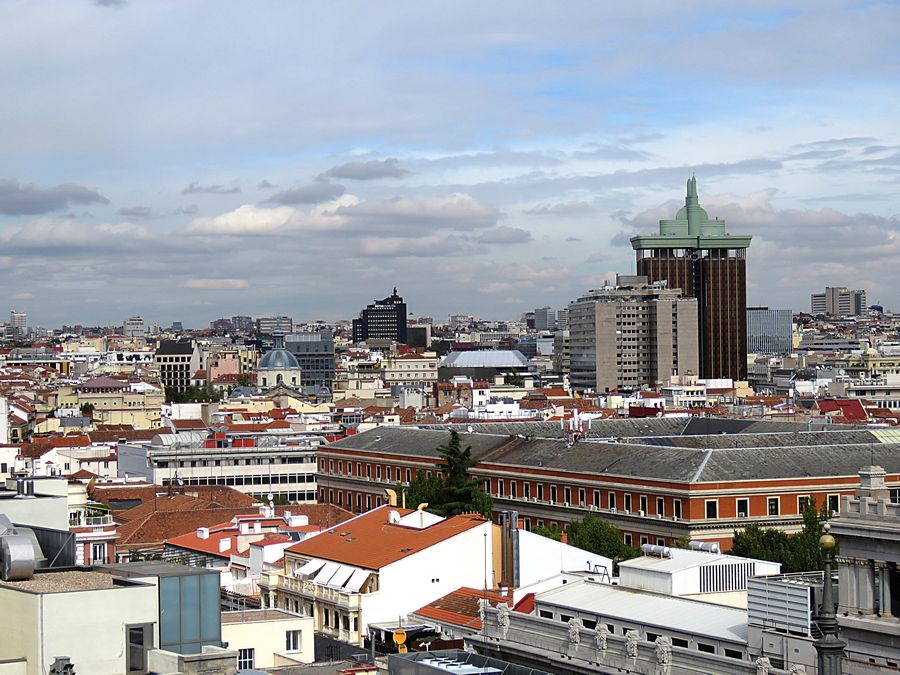
View of part of Madrid from a roof top restaurant
near our hotel.
The unusual building with a
green top is Torres de Colon.The unique design
of these twin office towers is locally called The Plug.
The mauve facade and
green roof
reflects the color scheme of the 1970s.
THE END
Link to Part One, Page One - Lisbon, Portugal
Pat's Home Page